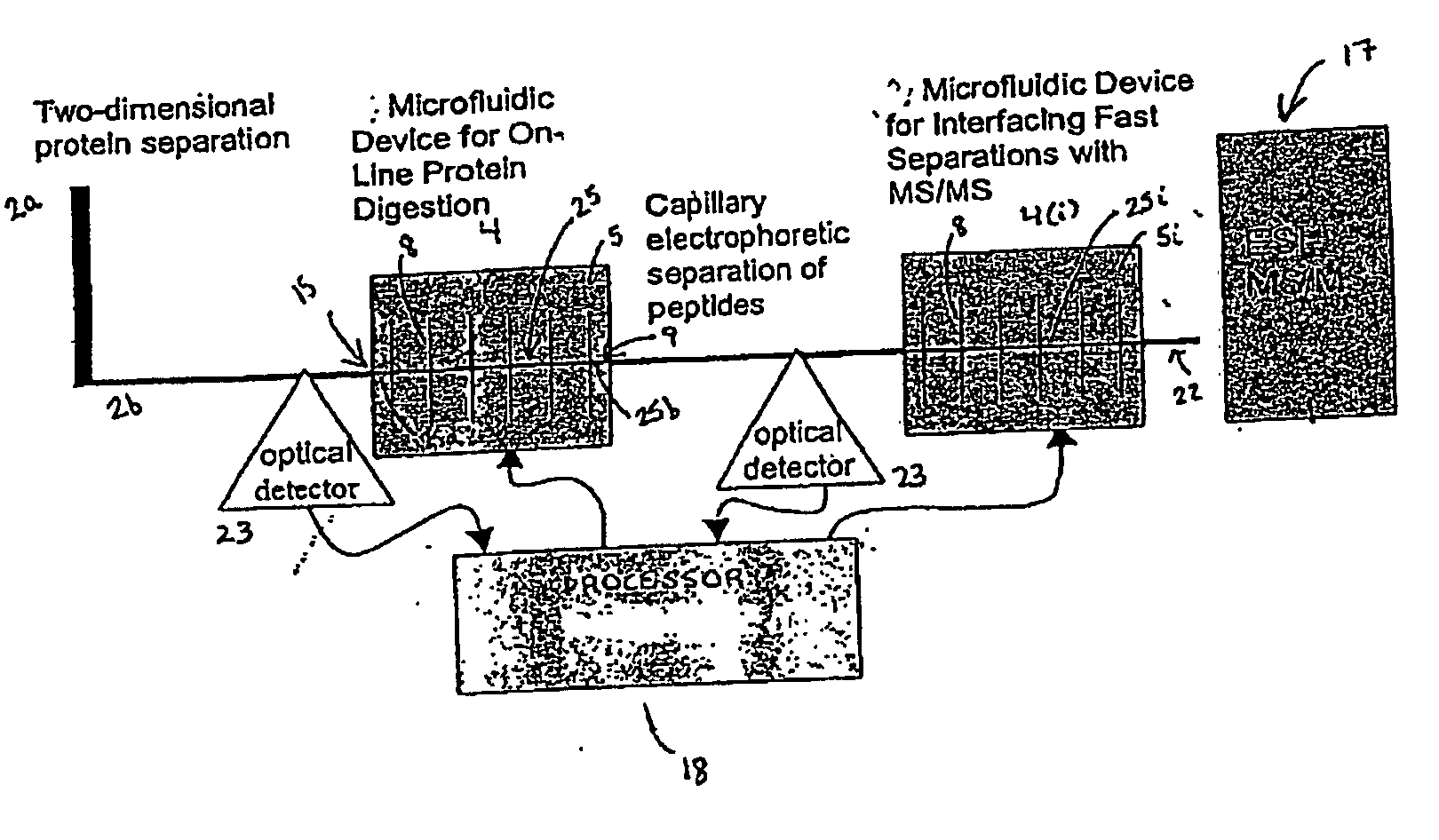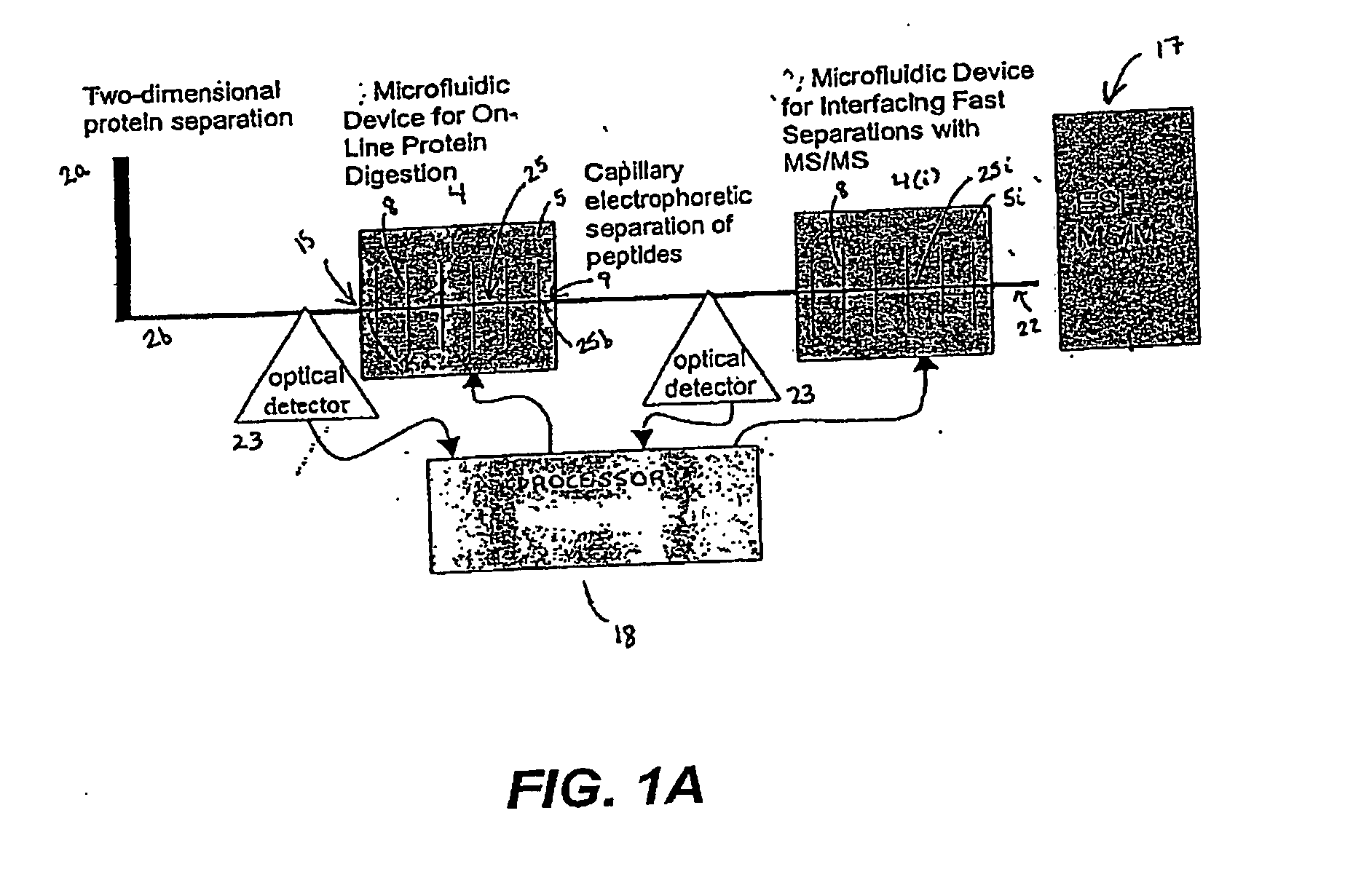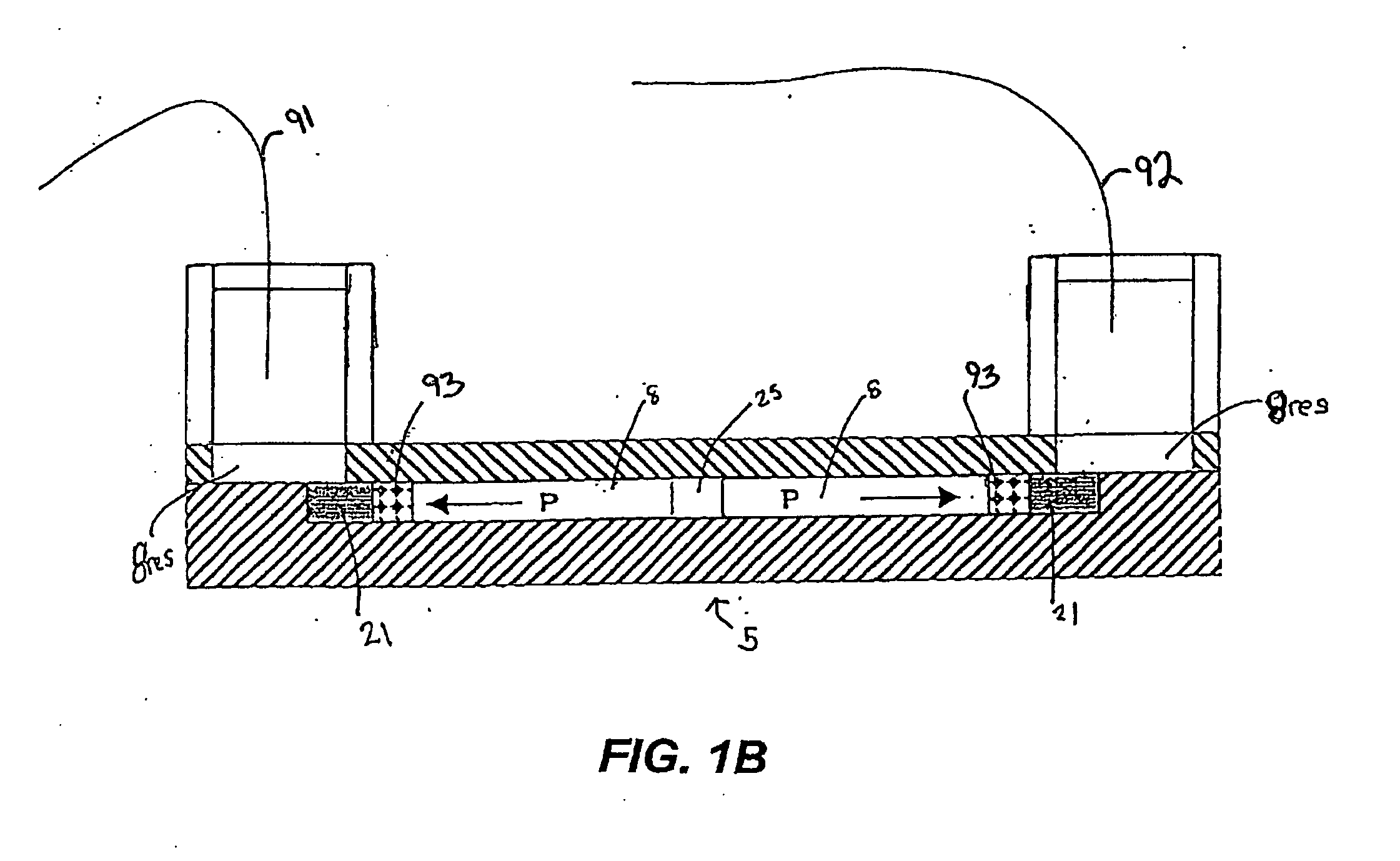Microfluidic system for proteome analysis
a microfluidic system and proteome technology, applied in the field of microfluidic systems and microfluidic devices for proteome analysis, can solve the problems of lack of sensitivity of current 2de-based technology, limited use of proteomics for identification, and inability to identify suitable cancer-specific markers, etc., to achieve the effect of improving the signal-to-noise ratio
- Summary
- Abstract
- Description
- Claims
- Application Information
AI Technical Summary
Benefits of technology
Problems solved by technology
Method used
Image
Examples
example 1
[0232] In a particularly preferred embodiment, the system 1 is used to identify a profile of proteins stimulated by PI 3-kinase. Cell lysates are obtained from prostate cancer tissue and from normal prostate tissue from the same or a different patient. Aliquots of lysates are evaluated in parallel using the system 1 to identify differentially expressed proteins while other aliquots are evaluated using nucleic acid arrays (e.g., GeneDevice arrays or cDNA arrays) to identify differentially expressed nucleic acids. Preferably, data obtained from each of these analyses is evaluated using the processor 18 of the system 1.
[0233] This analysis can be complemented by an examination of cells in which various proteins in the PI 3 pathway are known to be abnormally activated. For example, the viral form of PI 3-kinase (v-P3k) is constitutively activated, capable of transforming cells in cultures and will induce angiogenesis and hemangiosarcomas in chorioallantoic membrane tissues of embryonat...
PUM
| Property | Measurement | Unit |
|---|---|---|
| angle | aaaaa | aaaaa |
| angle | aaaaa | aaaaa |
| angle | aaaaa | aaaaa |
Abstract
Description
Claims
Application Information
 Login to View More
Login to View More - R&D
- Intellectual Property
- Life Sciences
- Materials
- Tech Scout
- Unparalleled Data Quality
- Higher Quality Content
- 60% Fewer Hallucinations
Browse by: Latest US Patents, China's latest patents, Technical Efficacy Thesaurus, Application Domain, Technology Topic, Popular Technical Reports.
© 2025 PatSnap. All rights reserved.Legal|Privacy policy|Modern Slavery Act Transparency Statement|Sitemap|About US| Contact US: help@patsnap.com



